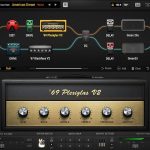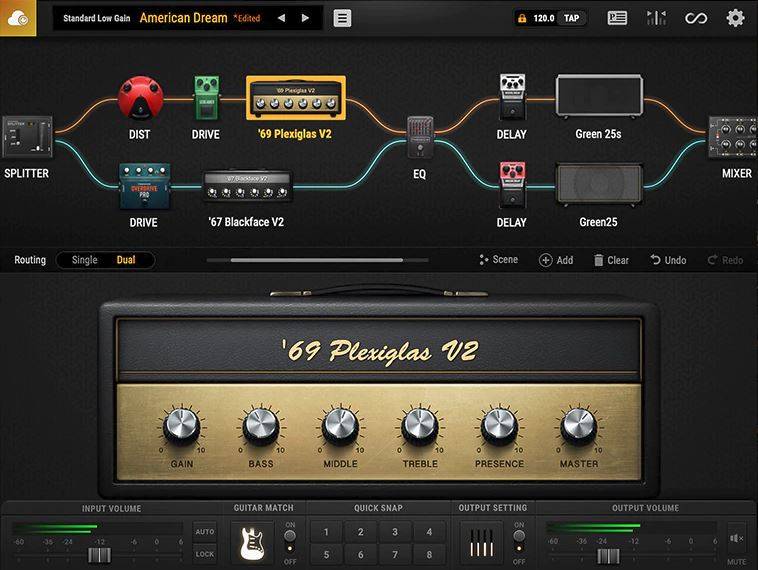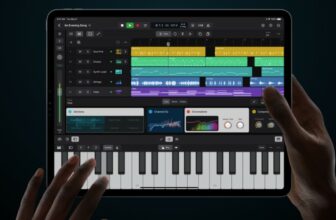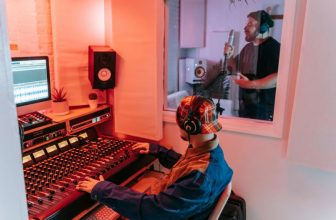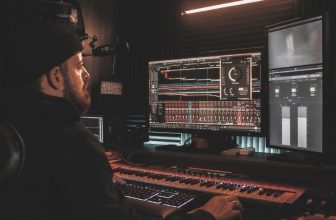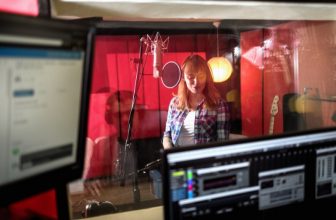Positive Grid BIAS FX 2 Review
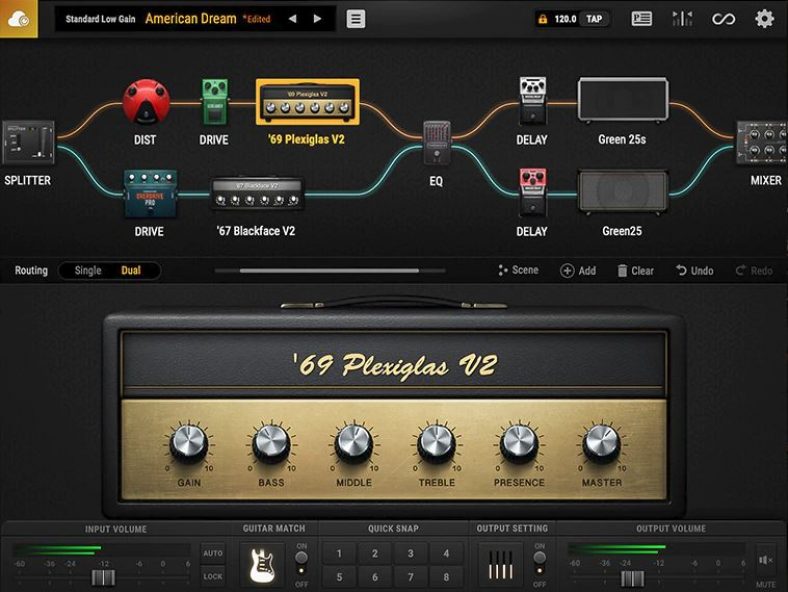
BIAS FX 2 Review
Pros
- Huge collection of amps, cabs, and pedals
- Guitar Match is a very innovative concept
- Excellent low and mid-gain tones
- Super-sleek and easy to use GUI
- Stable and reliable for studio and live use
Cons
- Not all the models are great
- High gain tones aren’t the best
- Limited options for bass guitar, especially in Standard tier
- Standard tier doesn’t include custom IR loader
- Moderately heavy resource usage
BIAS FX 2 is an excellent, sleek looking guitar and bass amp modeling and effects powerhouse providing high-quality tones and a unique Guitar Match feature, but with a bit of a ‘quantity over quality’ issue in places.
At first glance, two things about Bias FX2 grab your attention: the gorgeous GUI and the sheer amount of features packed into the software. The first one makes it stand out amongst its amp simulation competitors but the second tends to work against its own favor.
BIAS FX 2 is Positive Grid’s successor to its original groundbreaking BIAS FX VST. The quality and ease of use, along with some skillful marketing of the original established quite a reputation for Positive Grid.
Contents
It’s therefore remarkable to observe that BIAS FX 2 is not a case of a disappointing sequel. In fact, it improves upon the first in almost every existing aspect while adding their flagship Guitar Match function.
Interface
BIAS FX 2’s loading screen opens up into a neat view of the signal path of its default patch. Every component in the chain has a sleek icon that can be clicked to bring up the individual GUI for each amp, cabinet, or effect pedal.
All the component interfaces are modeled after their real-life counterparts and feature smooth knobs and switches for tweaking.
Components can be clicked and dragged to add, remove, or change their position in the signal path. Double-clicking a component brings up a categorized library of all the other available components to replace it with.
Each component also features a power switch to easily turn them on or off. A number of factory presets, which include some signature artist patches are easily accessible
The interface features handy buttons to switch between single and dual signal paths and to save various versions of patches into ‘scenes’. The GUI includes the usual collection of controls for input and output levels, patch banks, and so on.
A dedicated button brings up BIAS FX 2’s Guitar Match functionality, which we will elaborate further on.
Overall, BIAS FX 2’s interface is a breeze to work with. Not only does it look good, but it is simple and powerful enough to facilitate a streamlined workflow, in the studio, or even live.
Hardware components are painstakingly realized in the digital realm, which is pleasing to work with and lends a qualitative authenticity to the end product.
The New and Shiny: Guitar Match
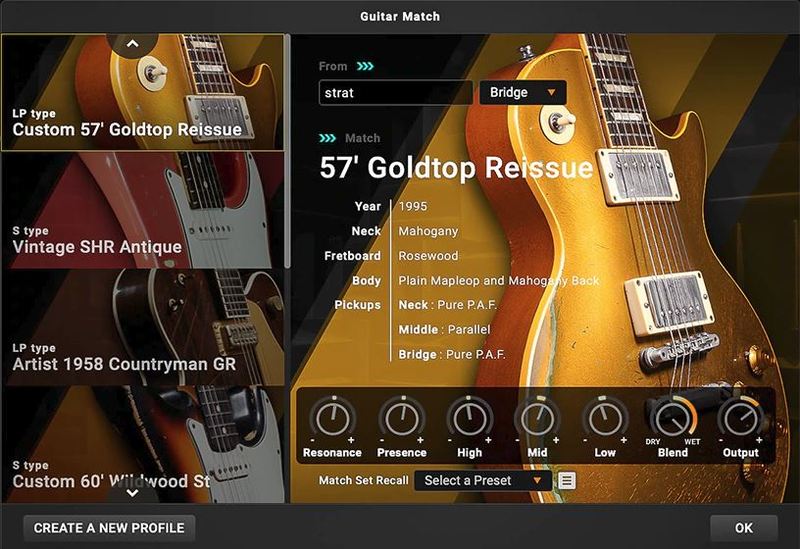
BIAS FX 2’s heavily marketed flagship feature Guitar Match, claims to be able to turn one guitar into several kinds of legendary guitars. By analyzing the sound of your guitar and comparing it to their standard models, it can turn a Stratocaster into a Telecaster or a Les Paul into a Jazzmaster.
But do these claims stand true? Well, to an extent. As with most tech that claims to turn one thing into another, what it provides is a reasonable approximation and not a miraculous alchemy.
Guitar Match works by having the user enter the design of their guitar: body style and pickup configuration. Then you play single notes while it analyzes the tone.
It then compares the gathered data from all of these measurements and makes adjustments to match the chosen guitar model through their algorithm.
It’s an impressive technology and can yield reasonably convincing results given an actually good guitar with high-quality pickups.
It can’t however transform a cheap knockoff into a $5000 guitar.
Guitar Match can certainly be an excellent songwriting tool to get a feel of the sound you’re going for, or even be handy live if you want the flexibility of tone without lugging around an army of axes.
But in a professional studio environment, I don’t see it completely eliminating the need for different guitars and configurations. At least not yet.
The Bread and Butter: amps, cabs, and pedals
BIAS FX 2 ships with a huge collection of amps, cabinets, effects units, and Guitar Match models.
There are 3 product tiers: Standard, Professional, and Elite, each featuring more models of every category in addition to the ones in the previous tier.
For this review, I am using the Elite version, featuring 100 amps, 122 effects, and 20 Guitar Match models. The program is available in both plugin and Standalone modes.
Amps
Positive Grid touts that they’ve modeled real-life hardware amps down to individual components, lending them an astonishingly high degree of authenticity in tone and dynamic response.
Indeed, right out of the box, some of the amp models and presets scream quality, and would be hard to tell apart from a real amp in a blind test, especially within a mix.
There is a vast variety of amp models at your disposal, sorted into Low Gain, Mid Gain, and High Gain categories. In my experience playing through it, the low and mid-gain models are mostly stellar.
Combining them with some effects from the BIAS collection can produce some gorgeous sparkling clean tones or slightly driven tones that break up subtly. The dual signal path feature further enables blending tones from two amps to taste.
Things aren’t as rosy in the high gain department though. When cranked up, while the tones remain clear and tight, they aren’t quite as meaty and punchy as I’d like.
There is a hint of brittleness in the high end and everything tends to sound a tad too compressed. While they could be usable within a dense mix, competing products like Neural DSP or Helix Native provided a dynamic response and hard-hitting attack closer to what I prefer.
Overall, there are a few absolutely fantastic amp models, and then there’s a bunch more that aren’t terrible but seem like additions to buff up the roster rather than actually enhance value.
At the same time, the options for bass aren’t nearly as numerous for guitar, especially in the standard tier, which feels a bit limiting. In any case, the overall modeling is definitely a step up from the original BIAS FX
Cabs
Positive Grid has teamed up with Celestion to bring licensed models of some of the world’s most famous and highly regarded guitar and bass cabinets, in addition to the factory models. Each cabinet comes with the option of adding up to 2 virtual mics, which can be chosen and placed in virtual space to sculpt your tone in detail.
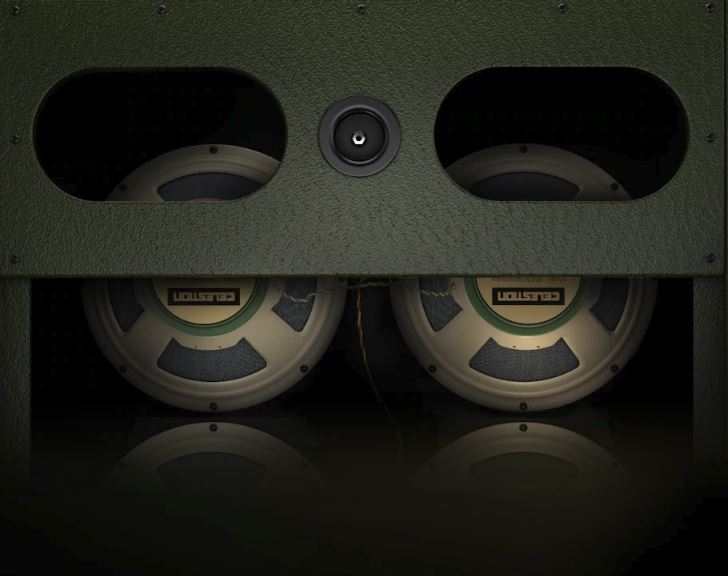
The Professional and Elite tiers also feature a dedicated Impulse Response loader to use with your custom or third-party IRs. Truth be told, while the BIAS FX cabinets are nice, again especially with clean tones, I found myself reaching for custom IRs most often for the best results.
This also brought some life and air to high gain tones which could sound a tad squashed through the factory cabinets.
The cabinet models in general sound superior to those in the first edition, but the inclusion of the custom IR loader is a welcome feature, though sorely missed in the Standard tier.
Effects Pedals
BIAS FX 2 has an almost overwhelming range of options for effects, from vintage fuzz and tube drives to lush choruses and digital delays.
The Elite tier is bundled with the BIAS Pedal software which further expands the arsenal.
As with the amps, some of the effects units end up becoming regular favorites, while others are relegated to being extra toys to experiment with. I especially liked the Les Rotary and Fuzzface models to name a couple, for their authentic and vintage tone.
Meanwhile, the compressors didn’t seem to quite operate how one would expect their hardware counterparts to work. This is not to say they weren’t functional, just that their response didn’t quite echo what is expected from similar models of the original hardware.
To sum up, BIAS FX 2 features marked improvements over its first edition and does what it sets out to do very well.
However, at times it feels like they could have focused on refining a few things to perfection instead of cramming in a ton of filler options across categories.
Online expansion: ToneCloud
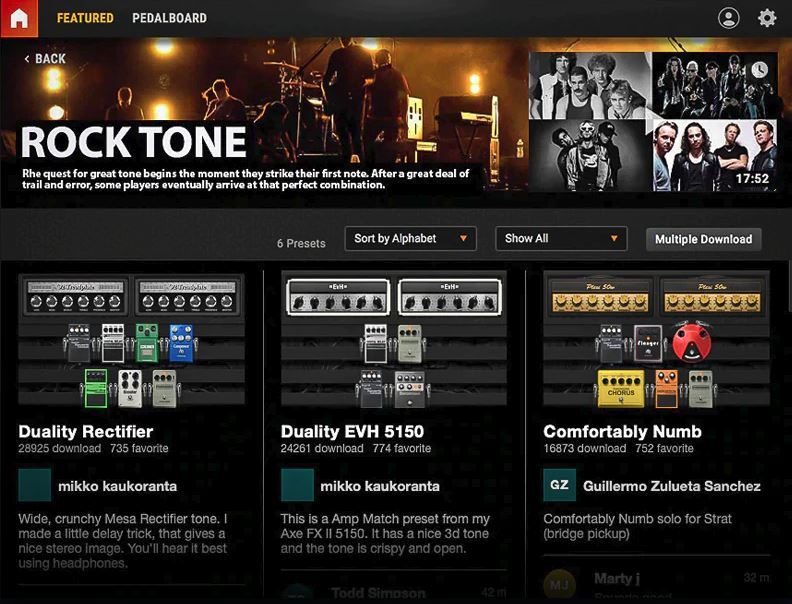
BIAS FX 2 makes it a breeze to save your custom patches and share it with the world through their ToneCloud platform.
Similarly, if you can’t quite figure out how to dial in a particular tone to perfection, you can turn to the thousands of other users online for help and choose from the wealth of custom user patches uploaded to ToneCloud.
Positive Grid also regularly publishes signature tones created in collaboration with the likes of artists such as Tosin Abasi and Ronny Gutierrez.
One downside of the platform, however, is that there is no real filter for quality of the uploaded presets. So if you’re looking for a particular sound, it might be a while before you find a good match.
Performance
Being as comprehensive as feature-packed as it is, it’s not surprising that BIAS FX 2 isn’t the snappiest performer on an average computer.
An SSD and a good amount of RAM are definitely recommended to boost startup times and real-time playback.
Once loaded, however, BIAS FX 2 is quite stable and I haven’t faced any glitches or crashes yet.
If you’re planning to add multiple instances in an already heavy project though, I’d suggest freezing some other effects to free up some room.
Pricing
At the time of writing this review, Positive Grid is running a limited time offer where the Standard, Professional and Elite tiers can be purchased for $59, $119, and $179 respectively, instead of their regular prices of $99, $199 and $299.
At this discounted price, the Professional tier especially seems like an excellent deal, providing more than enough features and bypassing the limitations of the Standard tier.
In comparison, the Line6 provides its Helix Native software for $399, Overloud provides TH-U for about $320, and each of Neural DSP’s signature packs costs between $120 to $160 (each pack featuring 2-5 each of amps, effects, and cabs). Other popular options include IK Multimedia’s Amplitube 4 retailing for about $180 and NI’s new Guitar Rig 6 for $199.
Pros
- Huge collection of amps, cabs, and pedals
- Guitar Match is a very innovative concept
- Excellent low and mid-gain tones
- Super-sleek and easy to use GUI
- ToneCloud makes online collaboration and portability easy
- Stable and reliable for studio and live use
- Competitive pricing especially after discounts
Cons
- Not all the models are great
- High gain tones aren’t the best
- Limited options for bass guitar, especially in Standard tier
- Standard tier doesn’t include custom IR loader
- Moderately heavy resource usage
Conclusion
BIAS FX 2 improves upon its predecessor and remains an excellent contender in the amp simulation space. Though a tendency for favoring quantity over quality is evident in some places, its signature Guitar Match feature and online integration through ToneCloud give it a unique identity in a crowded market.

